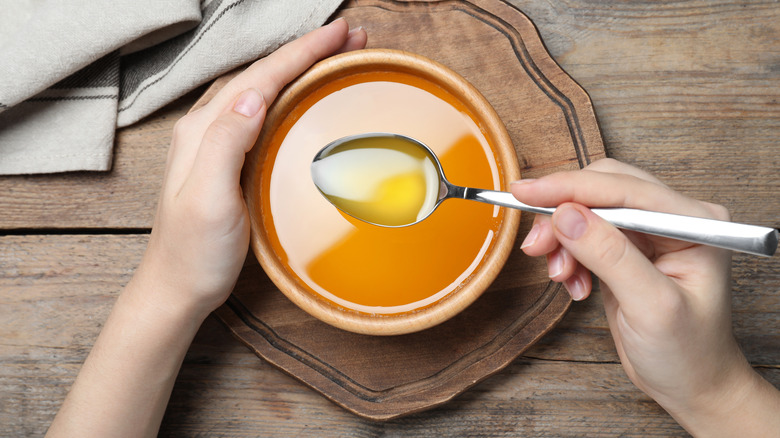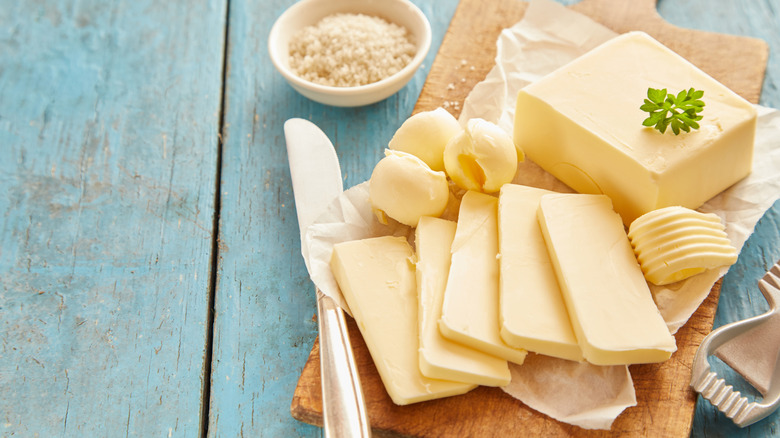The Scientific Reason Butter Tends To Explode In The Microwave
Softening butter in a microwave is a fairly benign experience. But when the goal is a total butter meltdown for lobster dipping or popcorn topping, a fireworks-style surprise may be coming your way. In an instant, seemingly without warning, your microwave is popping, sizzling, and exploding with hot yellow liquid, splattering the walls, ceiling, and door. What brings it from gentle softening to a fury of the dairy gods is a mystery – unless you know the science behind it all.
Butter was once a basic recipe component and a straightforward accompaniment for bread and sauces. But it's been glorified over the years, evolving into what Seattle Met calls "frou-frou butters" infused with wide-ranging edibles such as seaweed, lemon, bacon, garlic, or various salts. There's even bone-marrow butter, ghee, and European Plugra butter with low moisture and high butterfat. Michelin-starred restaurants offer a tableside "butter service," notes The Art of Plating, and Bella La Crema creates artisanal, organic butter harboring myriad herbs and spices: rosemary, cloves, molasses, cinnamon, lavender, tarragon, turmeric, thyme, and more. Butter is no longer blasé, and science enters the equation more often than we know.
Not all butter-based interactions are that fancy, but with something as simple as melting butter in your microwave, there's still a science and an art to the process. Here's the why and how for smoothly transitioning from solid butter block to smooth liquid gold.
Golden explosions
You've heard the term butterfat, and likely even "milk solids." Those two components, along with water, create simple butter, explains The Takeout. Oil and water infamously do not mix, as explained by Science Sparks. However, the two ingredients manage to hang together in a solid chunk of butter, due to emulsification in which water droplets permeate the butterfat. But the sudden jolt of heat from a microwave reveals the schisms, causing an explosion.
Those dormant little drops of water scattered throughout the butter start heating up through microwave energy, causing them to vibrate and turn into hot steam, according to Kitchen Appliance Answer. You can imagine how that affects the solid butterfat: It slowly begins melting, allowing the rising steam to escape, finally blasting the golden glory all over your oven.
It's a force of nature, with a bit of help from technology. But if watching that phenomenon once is enough for your scientific curiosity, there are ways to prevent or lessen the impact when melting butter in the microwave. The Takeout recommends setting the power on low and working in short increments of time, checking after 15 or 30 seconds, depending on the size of the butter. You may want to cut a full stick into smaller pieces before starting the process, according to Master Class, which suggests 10-second heating intervals. Always use a microwave-safe bowl, and cover it with a paper towel.

